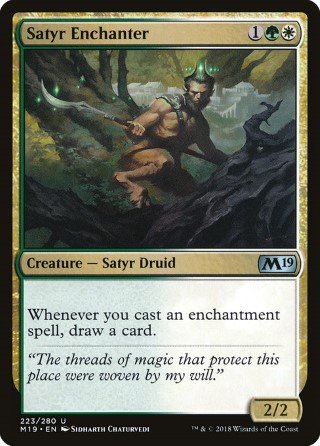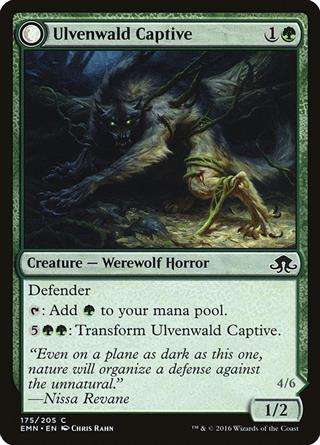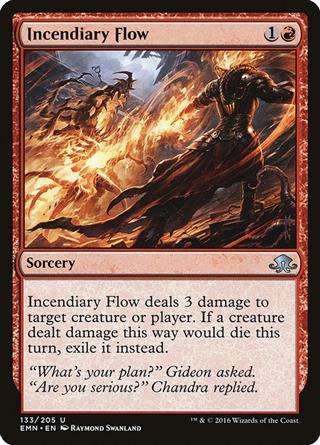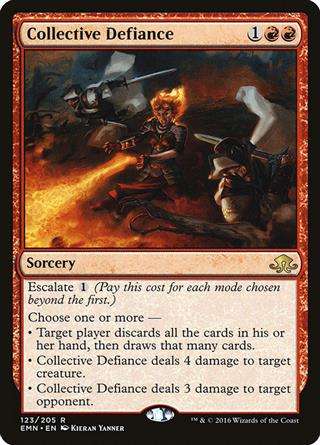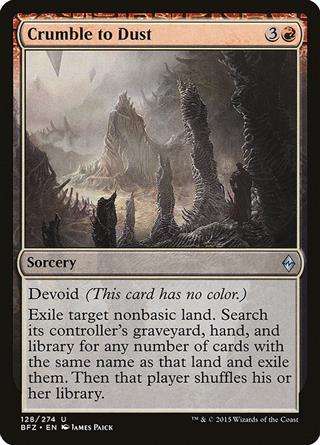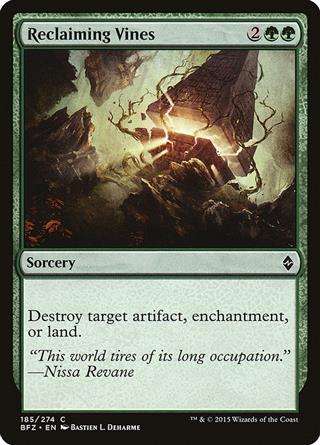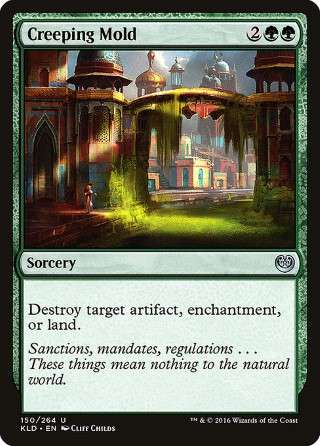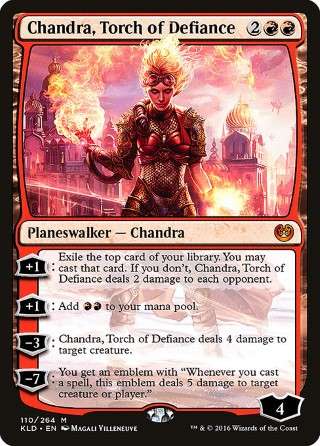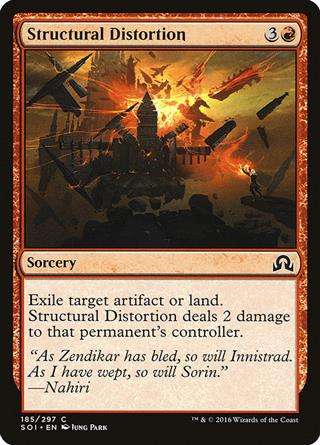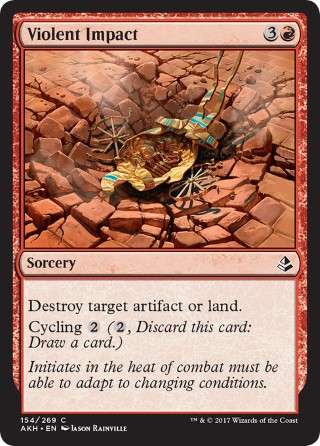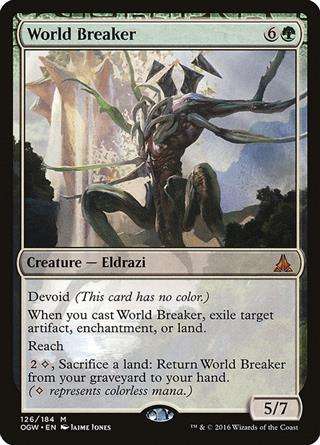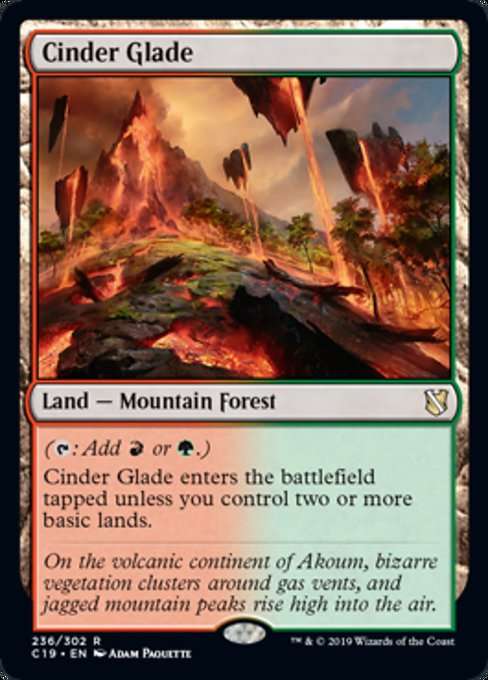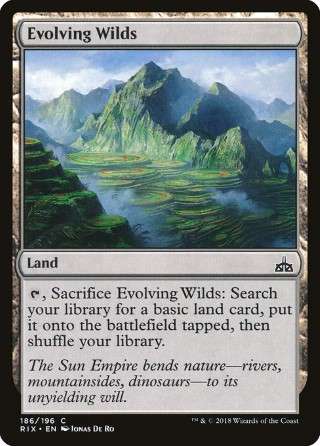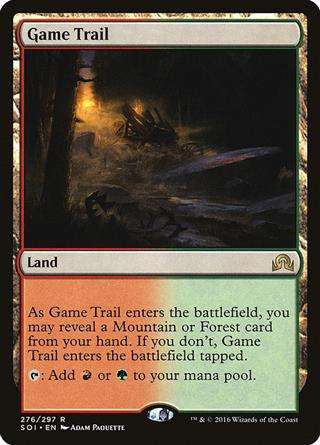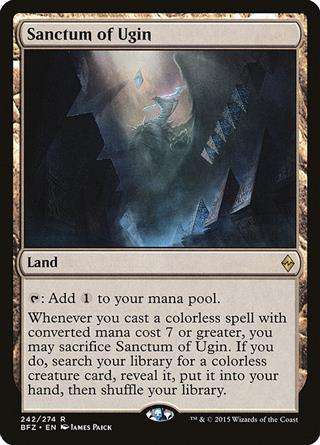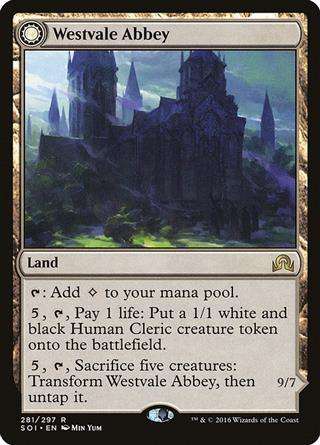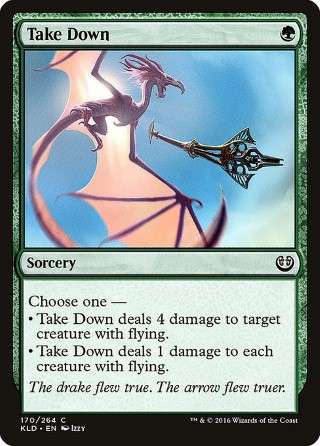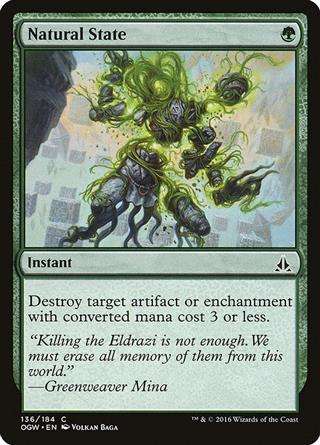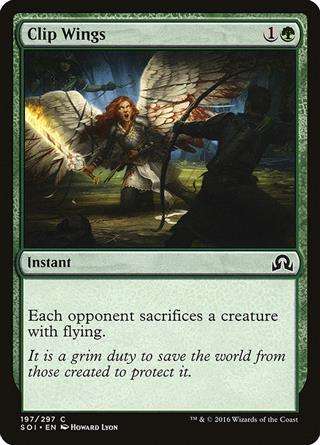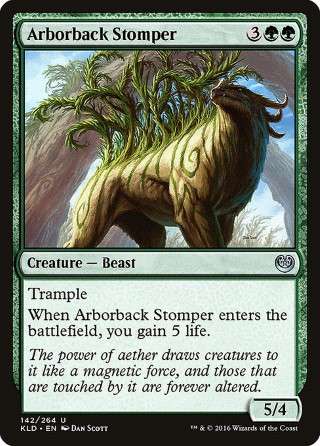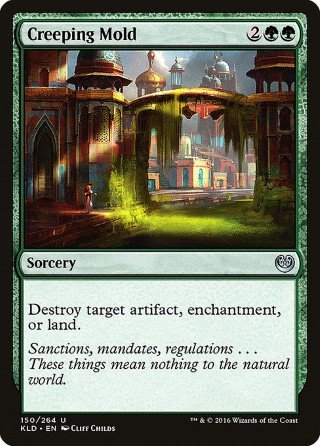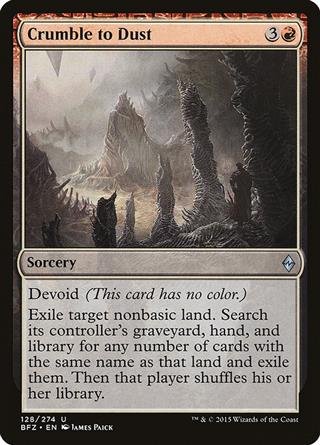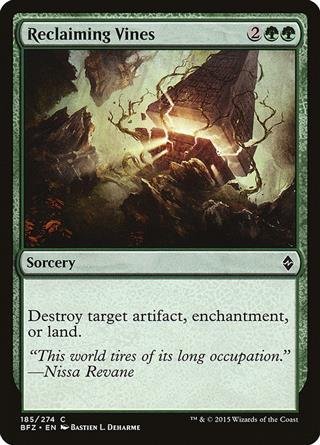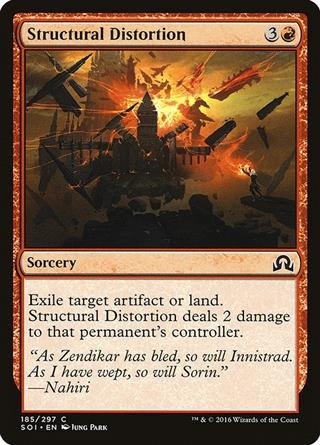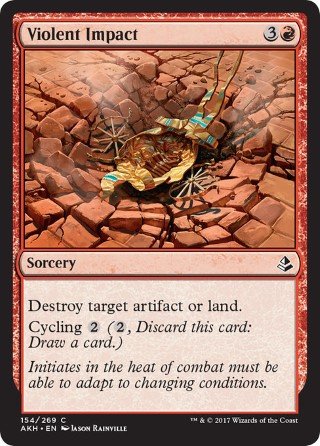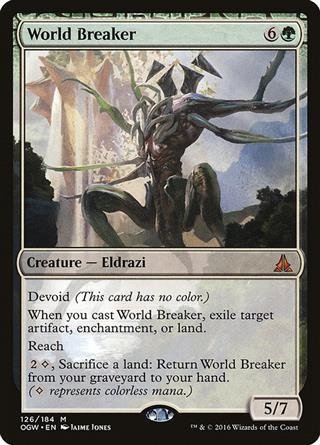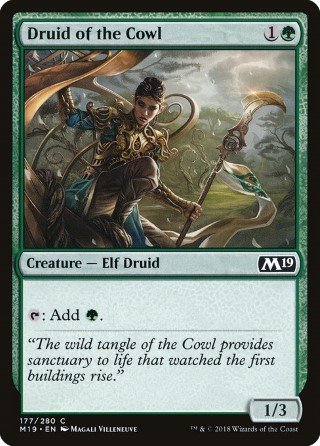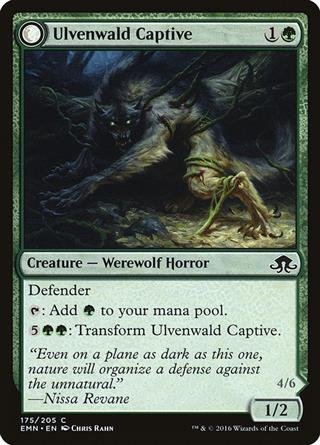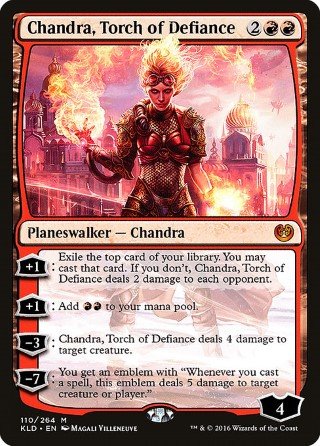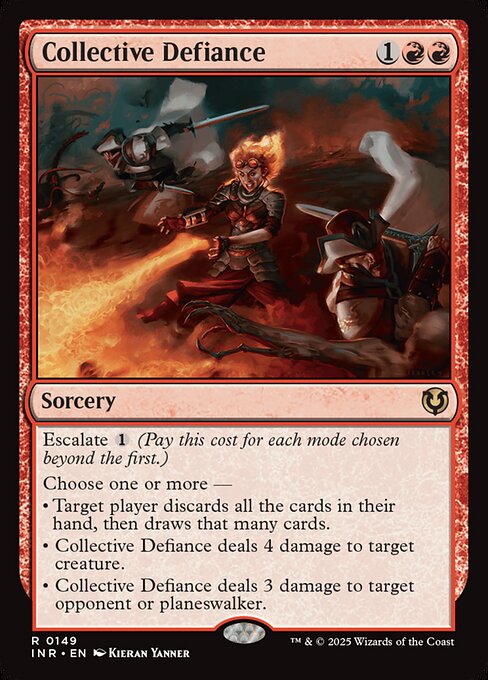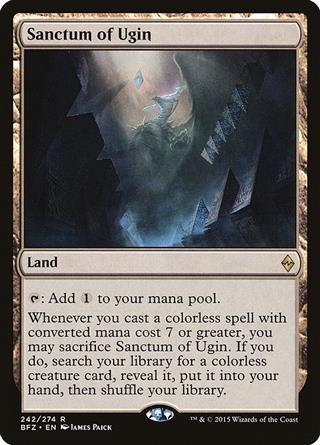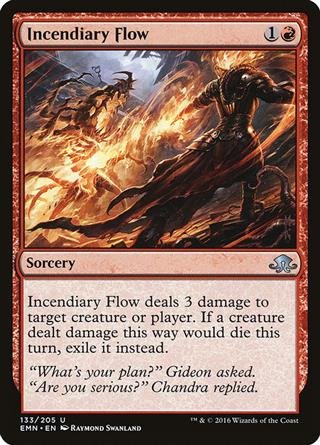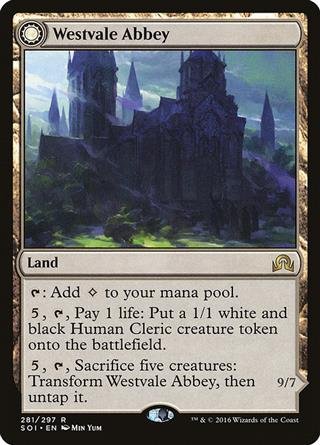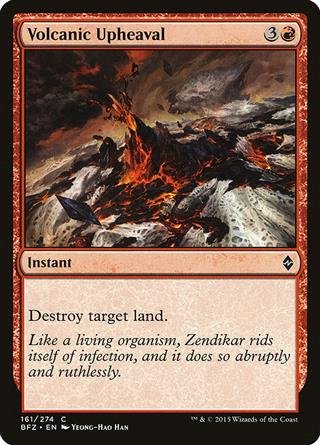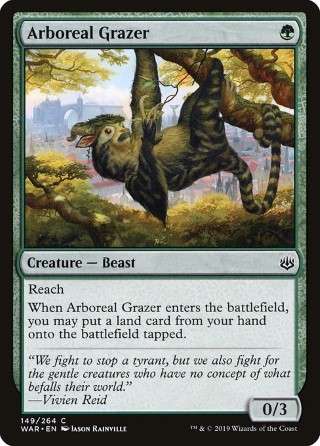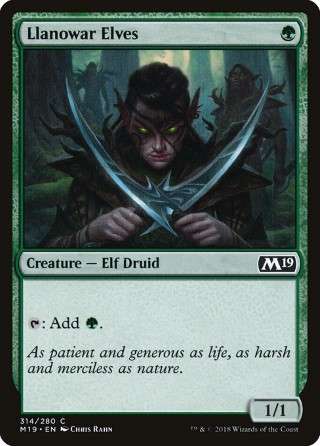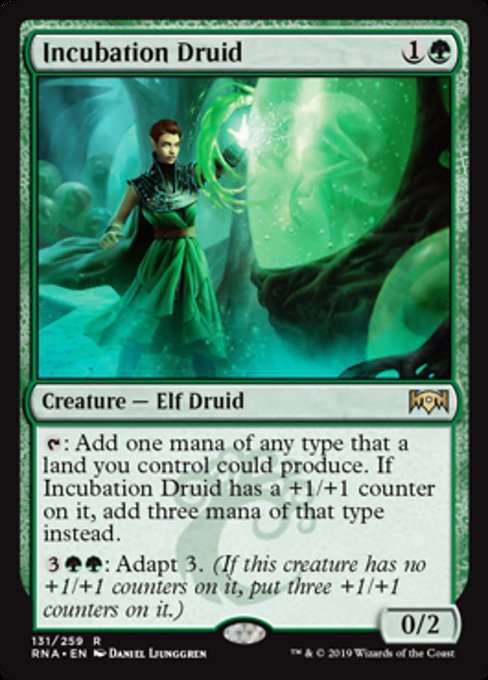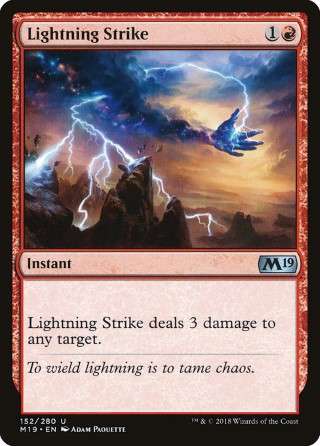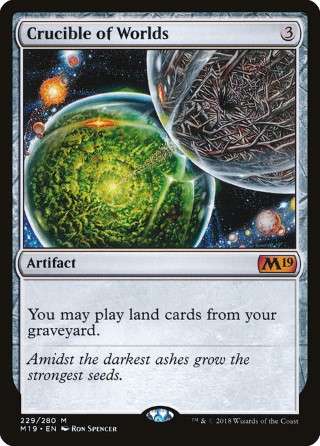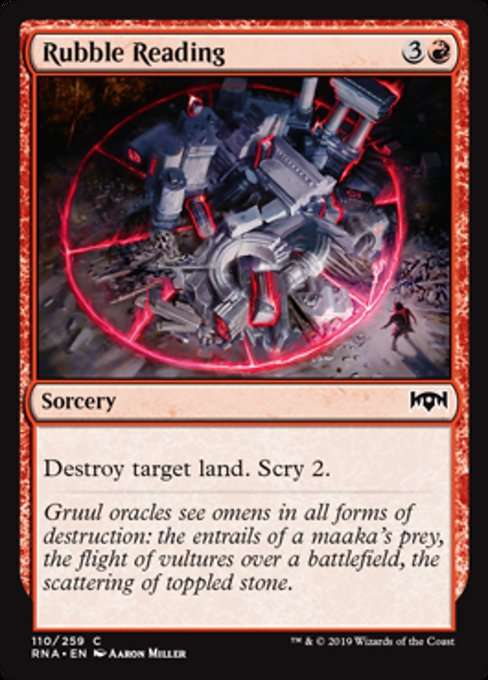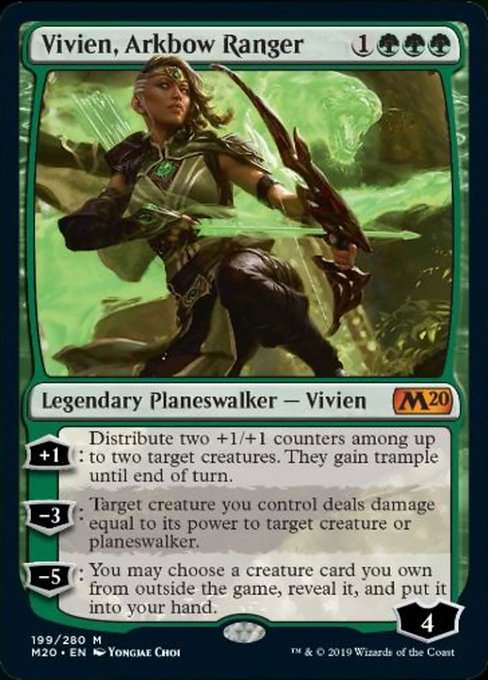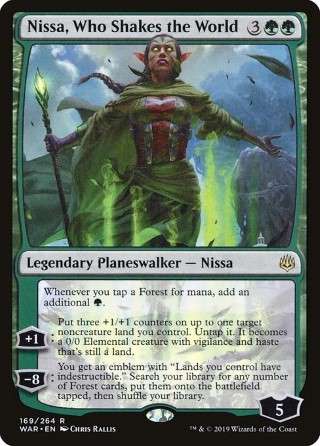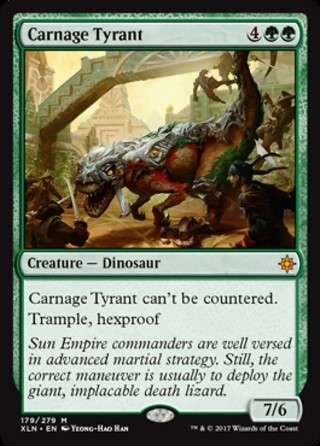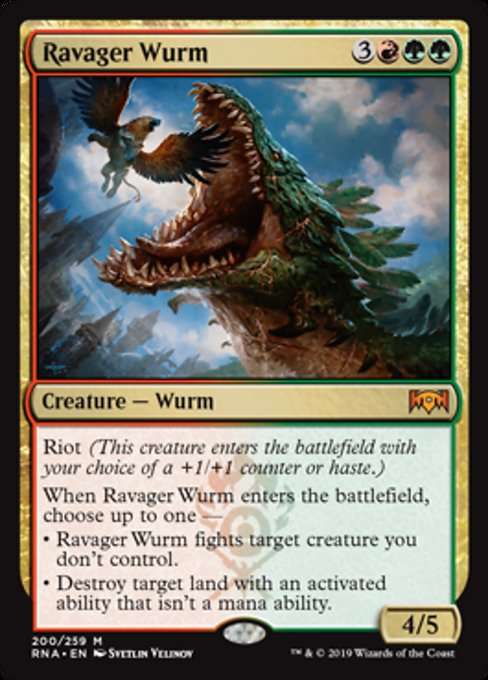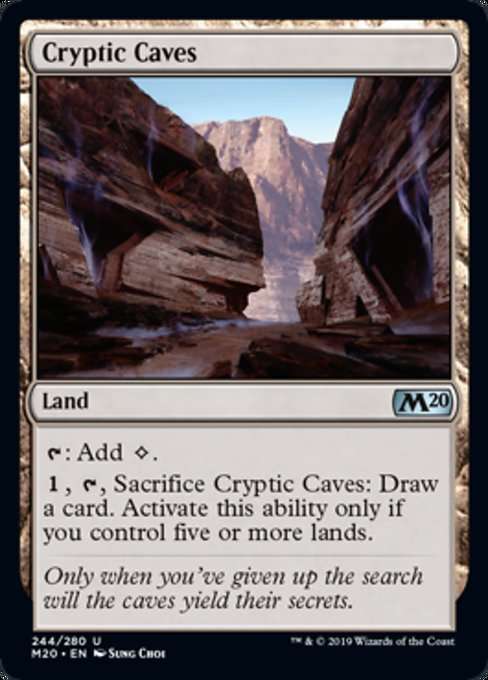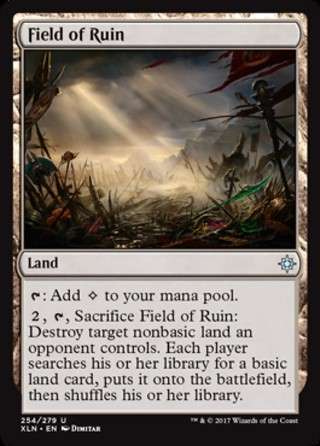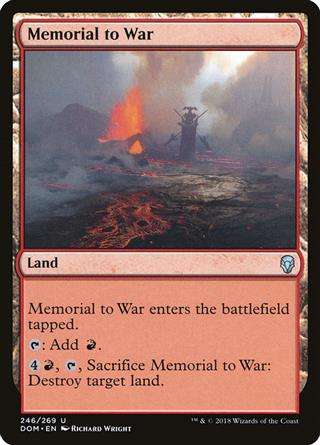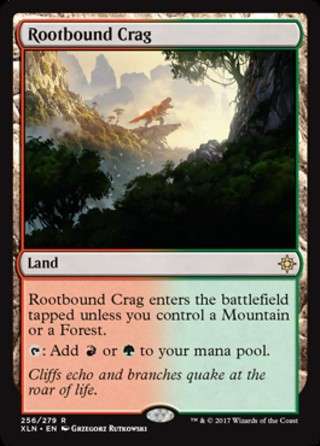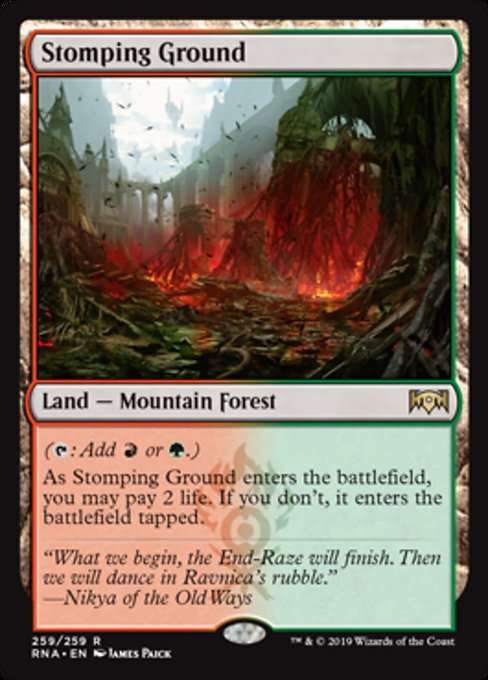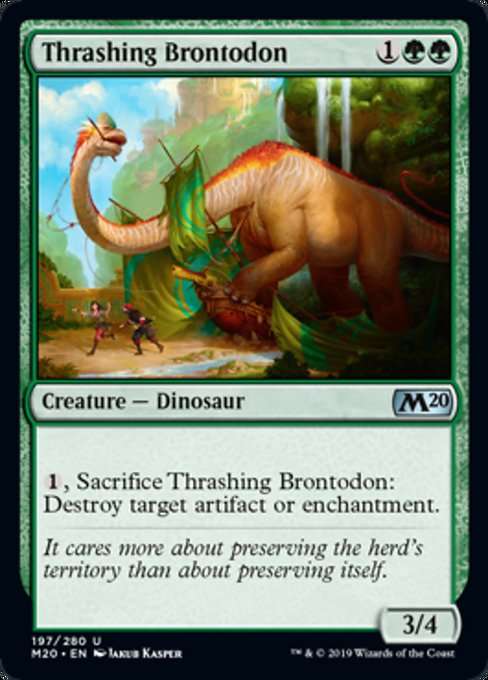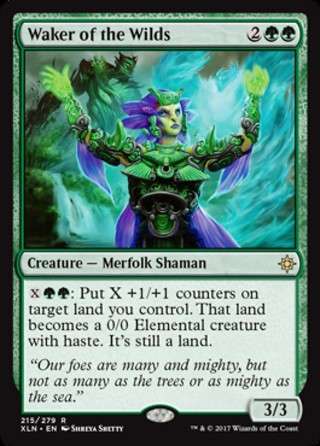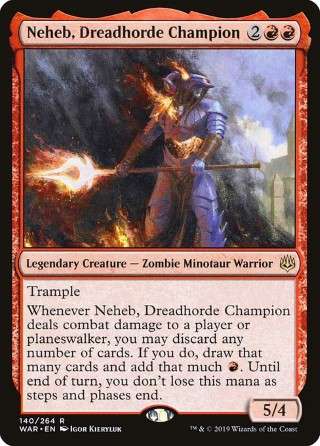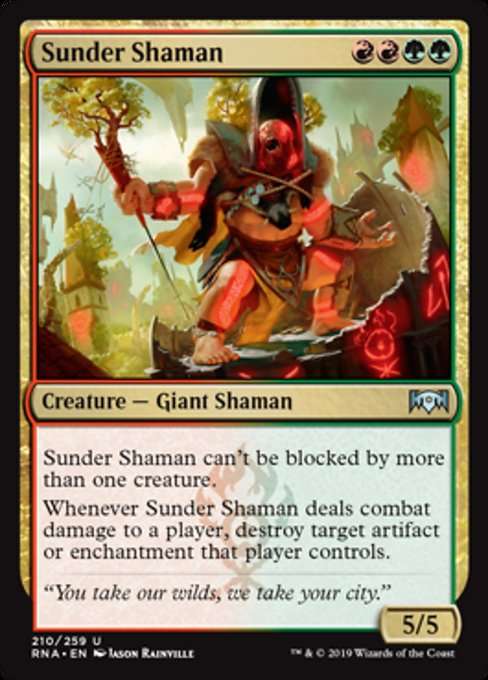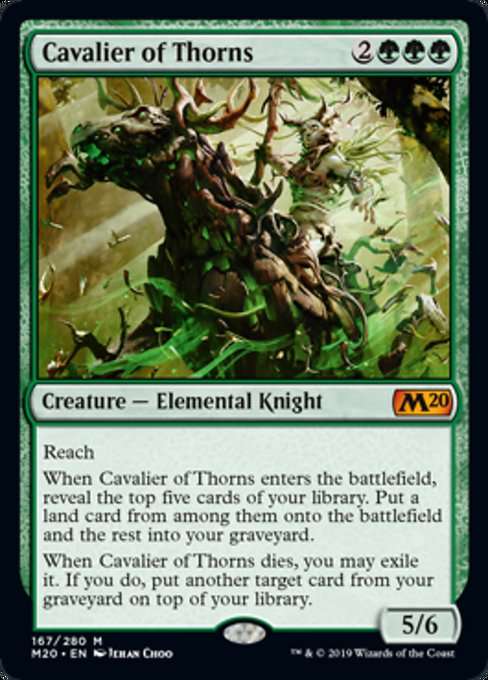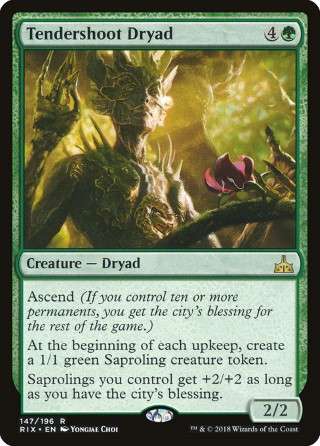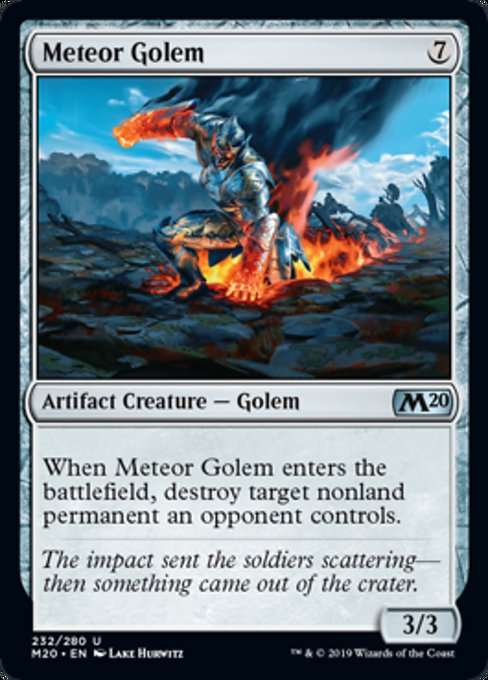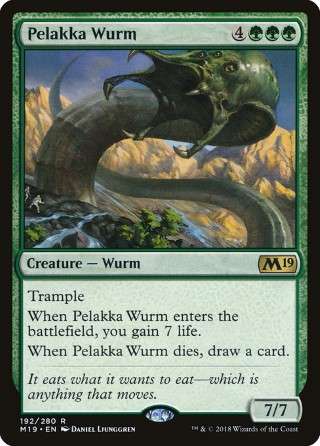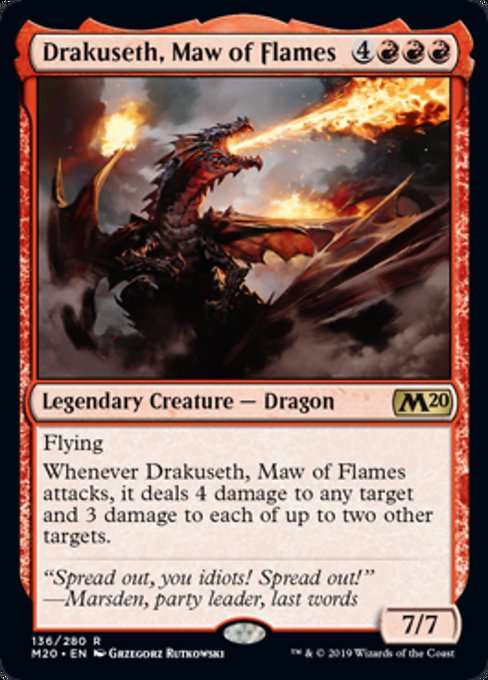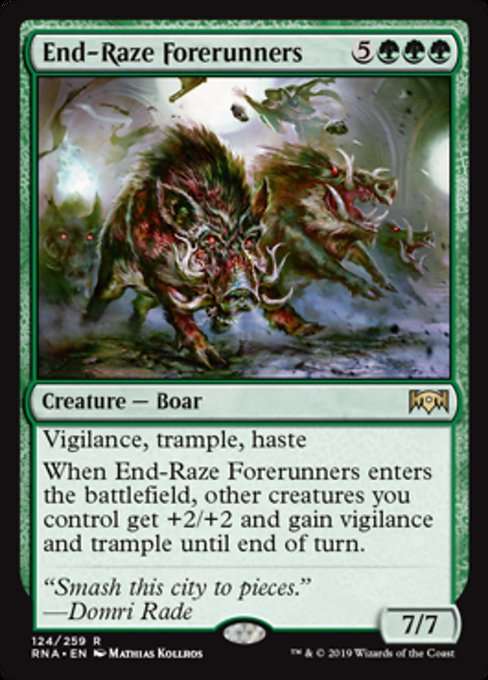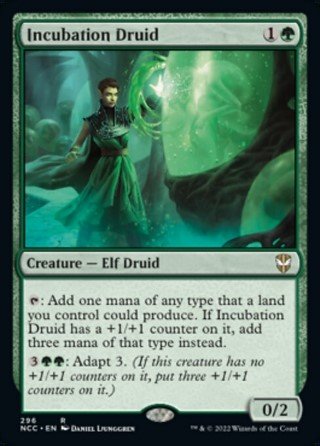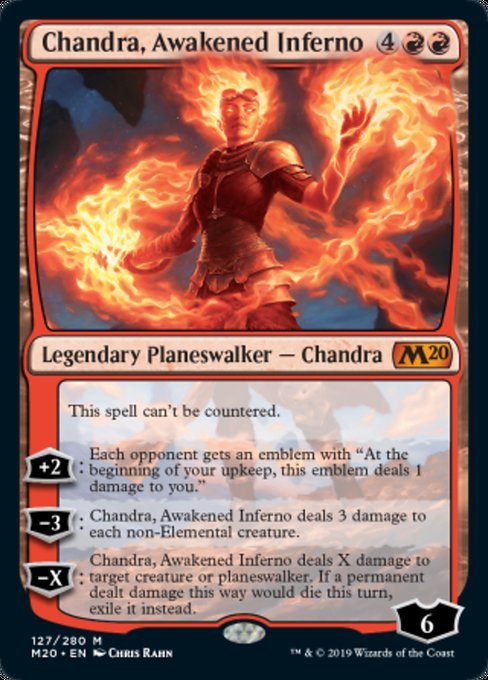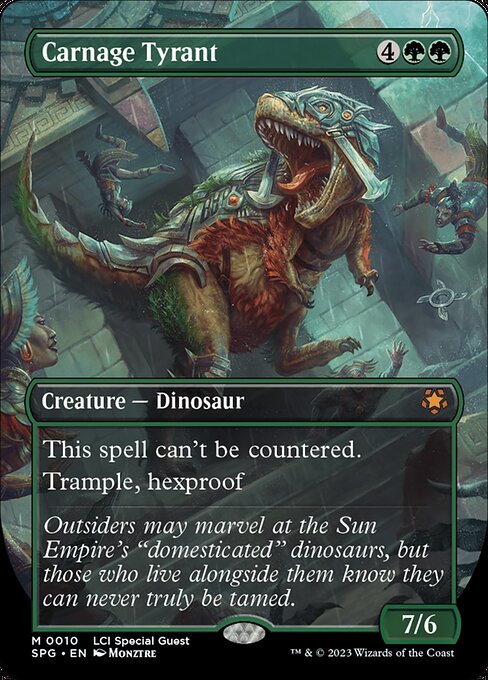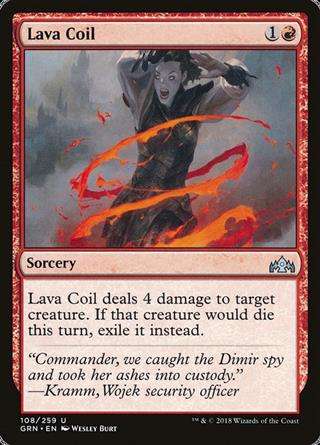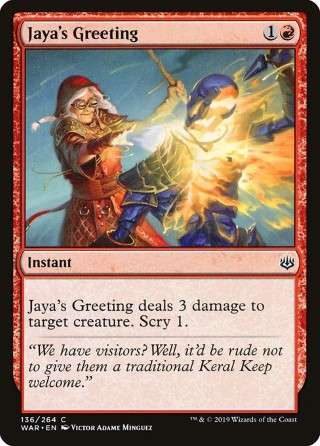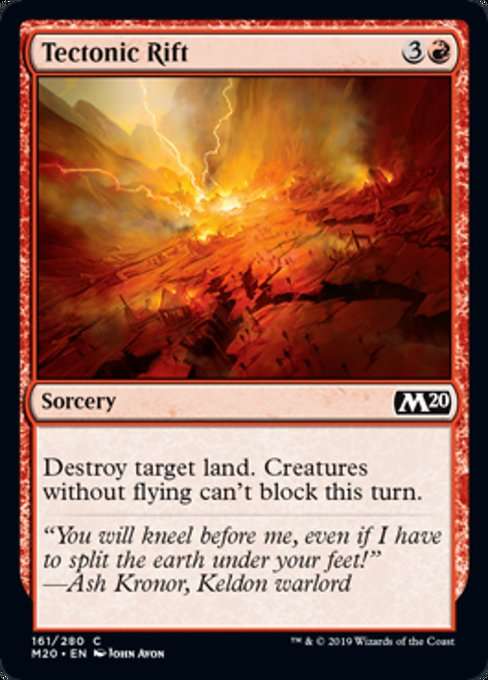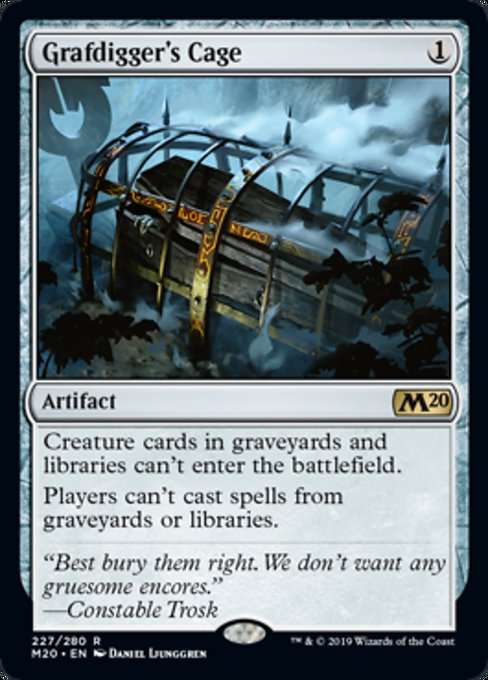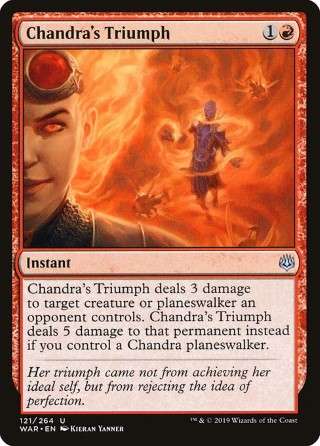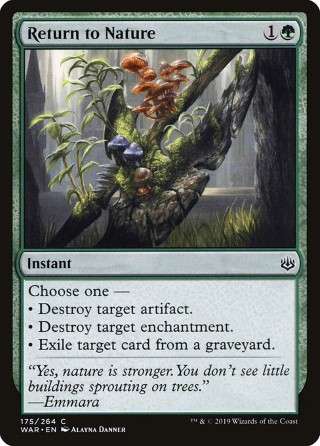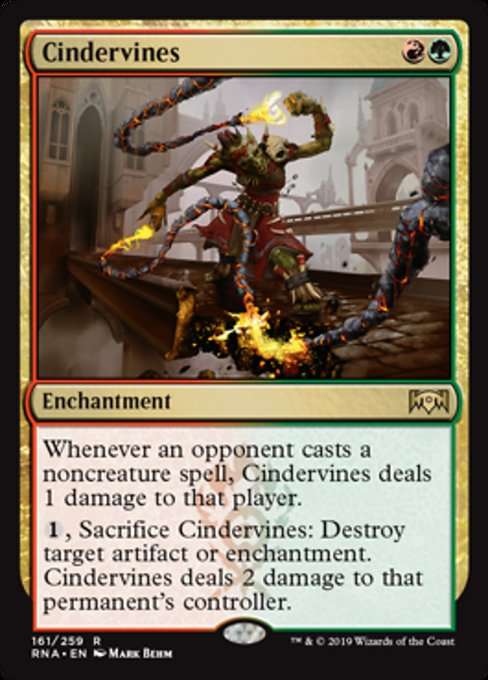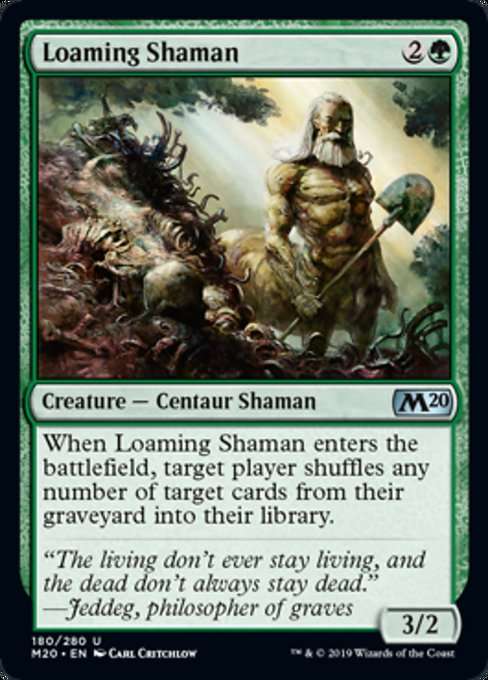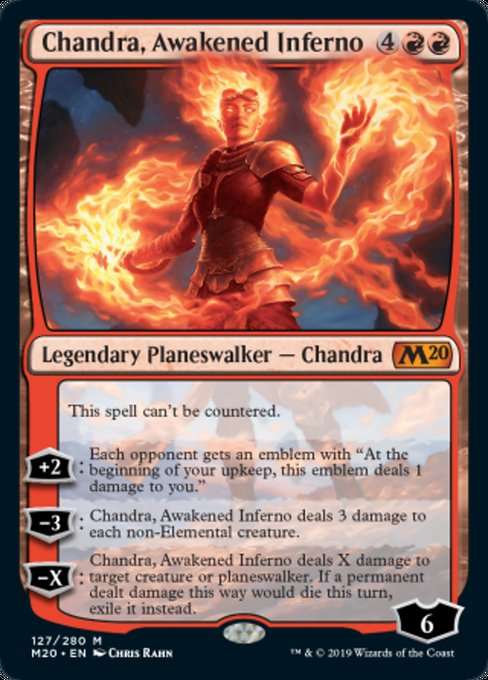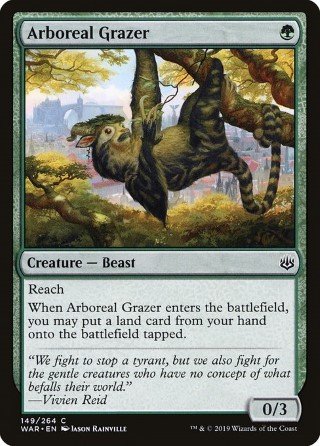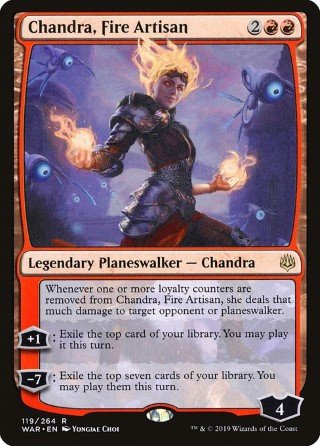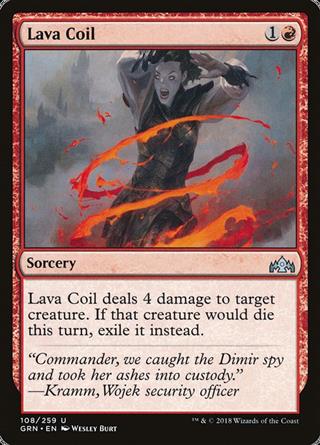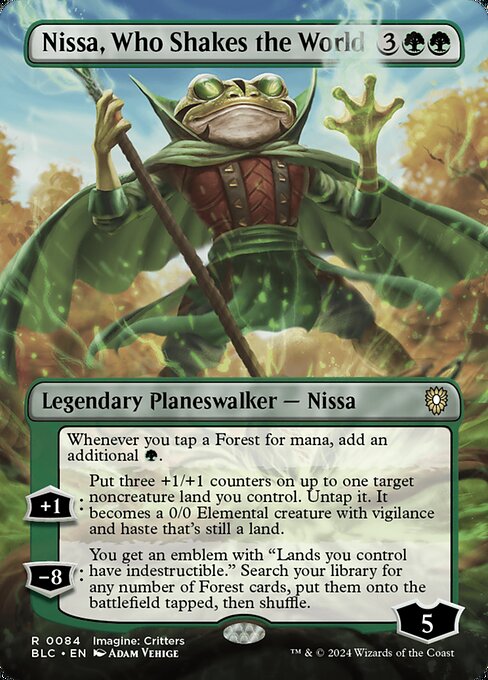Land Destruction – Post-Rotation Jank
While eternal formats are my preference, part of what draws me to Standard is the need to make a few archetypes work. Admittedly, they tend not to be the most pleasant things to play against, but I can't help but find myself drawn to making janky, formerly viable decks playable again. Thankfully, it's not a terribly long list:
- Ports of archetypes from Legacy, such as Enchantress with Satyr Enchanter
 or MUD with the Karns and Ugin (fellow Team AetherHub writer Maechael1916 will feature my take on the list soon)
or MUD with the Karns and Ugin (fellow Team AetherHub writer Maechael1916 will feature my take on the list soon) - The most Infect-adjacent thing in the format
- TurboFog, which is already a deck in Standard
- Land Destruction
The lattermost may feature the most infamous playstyle in all of Magic's history. Denying your opponent a resource as integral to gameplay as lands is obviously going to lead to some asymmetric games, and WotC has rightly taken measures to prevent the deck from resurfacing often.
The easiest to notice, and the main reason that LD is difficult to make viable, is that they haven’t printed a three-mana spell that can remove any land into Standard in years, save for those that impose drawbacks like Assassin's Trophy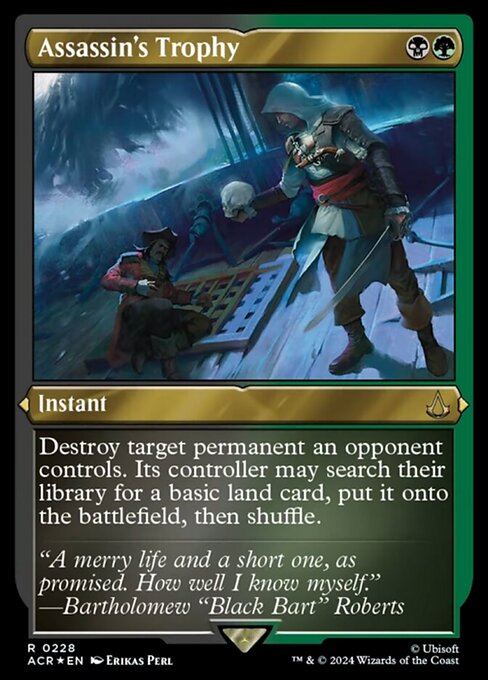 . While four four-mana land destruction spells currently exist in Standard (Demolish
. While four four-mana land destruction spells currently exist in Standard (Demolish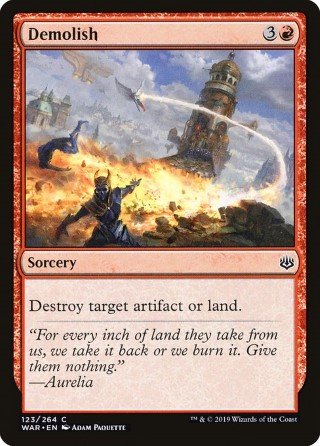 , Rubble Reading
, Rubble Reading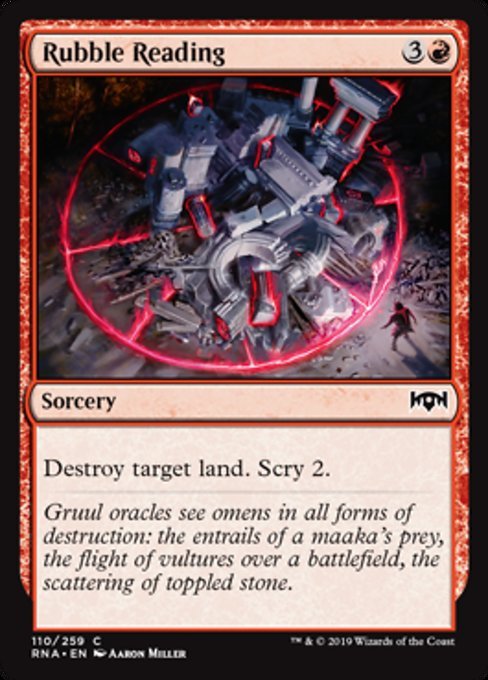 , Seismic Shift
, Seismic Shift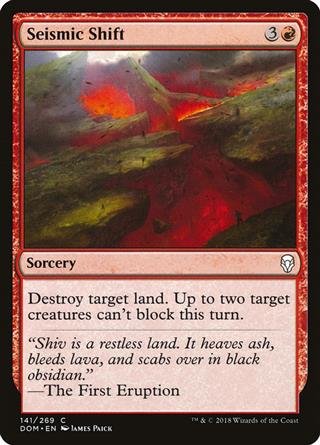 , and Tectonic Rift
, and Tectonic Rift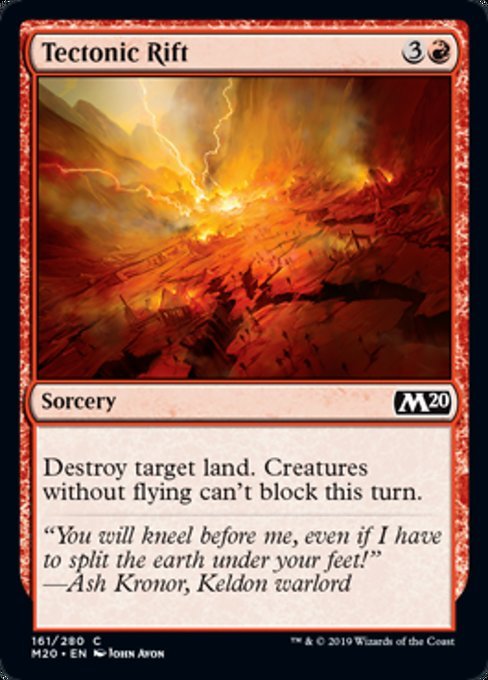 ,) and a few more expensive ones exist as well (such as Haphazard Bombardment
,) and a few more expensive ones exist as well (such as Haphazard Bombardment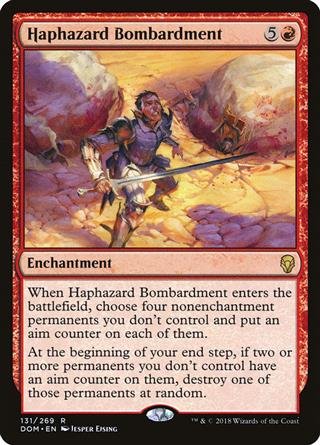 ), the fact that they cannot be ramped into by turn two hinders the archetype's viability. It's no secret that Standard has its share of fast and aggressive decks, from the ubiquitous Mono Red Aggro to Boros Feather to Arcanist Tempo to each and every tribal deck running around right now, and not being able to cut the opponent off from that third mana source means that they can often simply get off the ground before we have a chance to nail them to it. As if that weren’t bad enough, Elementals have Risen Reef
), the fact that they cannot be ramped into by turn two hinders the archetype's viability. It's no secret that Standard has its share of fast and aggressive decks, from the ubiquitous Mono Red Aggro to Boros Feather to Arcanist Tempo to each and every tribal deck running around right now, and not being able to cut the opponent off from that third mana source means that they can often simply get off the ground before we have a chance to nail them to it. As if that weren’t bad enough, Elementals have Risen Reef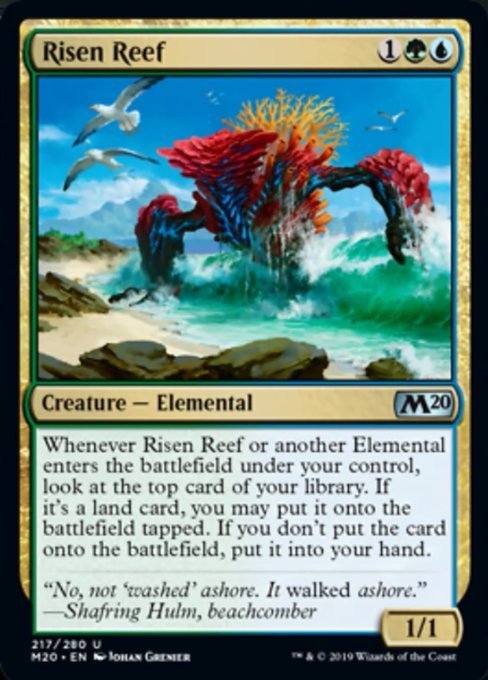 , and the dozens of planeswalkers running around give the opponent options once they have already established as little as three mana.
, and the dozens of planeswalkers running around give the opponent options once they have already established as little as three mana.
This creates a new problem for us: we need to have viable interaction, enough to come back from a disadvantaged board and to stabilize, at which point we can claw our way back or start digging our opponent’s grave.
Beyond this, land destruction suffers from a similar problem that ramp decks in general can tend to suffer. From Mono Green ramp in Standard to Tron in Modern to MUD in Legacy, some games involve simply finding your means, such as lands; mana dorks; and Cultivate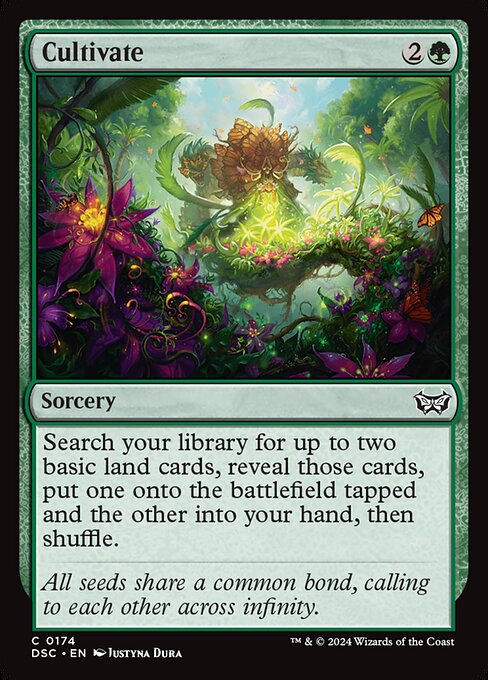 -effects, without finding your ends. If you simply don’t draw into your payoff cards, or if your opponent happens to deal with the few that you have, then you can find yourself out of luck. This is why it’s important to have a strong enough number of game-enders in your deck that you’re reasonably likely to find at least a few. However, having too many can water down other aspects of your deck. For example, since you need to spend your first few turns ramping, blowing up lands, and keeping the opponent off of their creatures, having too many payoffs instead can cause you to falter.
-effects, without finding your ends. If you simply don’t draw into your payoff cards, or if your opponent happens to deal with the few that you have, then you can find yourself out of luck. This is why it’s important to have a strong enough number of game-enders in your deck that you’re reasonably likely to find at least a few. However, having too many can water down other aspects of your deck. For example, since you need to spend your first few turns ramping, blowing up lands, and keeping the opponent off of their creatures, having too many payoffs instead can cause you to falter.
Of course, you’d ideally have cards that fill multiple roles. While the trade-off is usually that they are not as good at either role as a specialized card would be, the utility is often more than worth the diminished effect. Lands that serve as land destruction or win-cons, win-cons that serve as land destruction, ramp that serves as win-cons, interaction that serves as land destruction, etc. are all effective ways to keep your deck from running out of steam or lacking a needed option for a situation.
For an example deck from a previous Standard, here’s a list that I ran from Battle for Zendikar to Hour of Devastation:
Gruul Land Destruction - BFZ-HOU
Main 60 cards (19 distinct)
| Creature (11) | |||
|---|---|---|---|
| $2.62€2.251.69 | |||
| $0.20€0.060.03 | |||
| $0.20€0.140.03 | |||
| Instant, Sorcery, Enchantment, Artifact (22) | |||
| $4.40€3.971.81 | |||
| $0.49€0.430.02 | |||
| $0.22€0.110.03 | |||
| $0.25€0.120.03 | |||
| $0.20€0.110.03 | |||
| $0.20€0.060.03 | |||
| $0.20€0.060.03 | |||
| $0.20€0.100.03 | |||
| Planeswalker (1) | |||
| $2.50€2.090.27 | |||
| Land (26) | |||
| $2.27€1.870.02 | |||
| $0.49€0.320.02 | |||
| $1.80€1.540.02 | |||
| $0.49€0.370.40 | |||
| $0.21€0.150.03 | |||
|
5
Forest
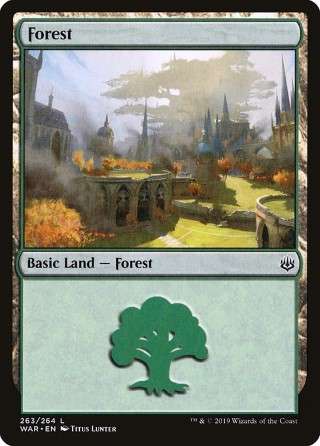
|
$0.20€0.040.03 | ||
|
5
Mountain
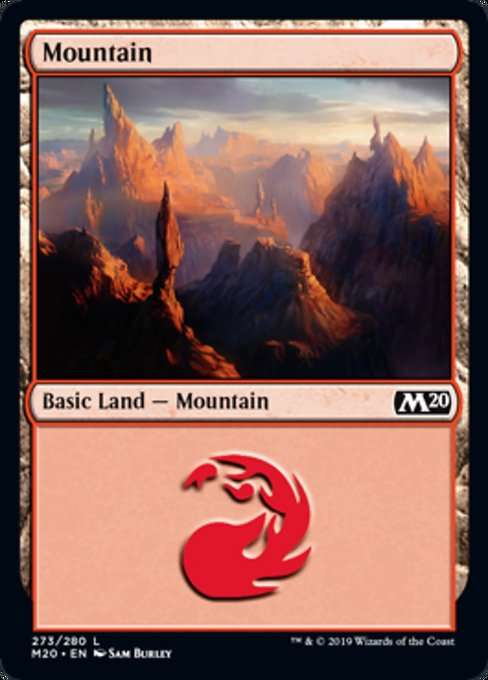
|
$0.95€0.060.03 | ||
Side 15 cards (7 distinct)
| $0.20€0.100.04 | |||
|
4
Plummet
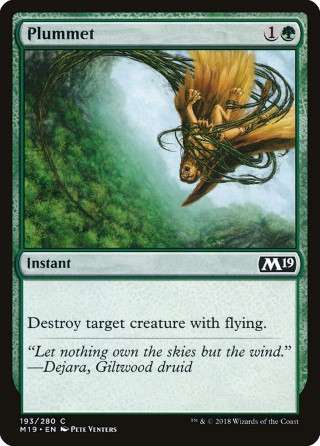
|
$0.19€0.020.05 | ||
| $0.17€0.020.03 | |||
| $0.24€0.150.03 | |||
| $0.25€0.120.03 | |||
| $0.20€0.040.04 | |||
| $0.49€0.430.02 |
Using this list, let’s establish what cards we have that fill each role:
- Land Destruction: 2x Creeping Mold
 ; 1x Crumble to Dust
; 1x Crumble to Dust ; 2x Reclaiming Vines
; 2x Reclaiming Vines ; 4x Structural Distortion
; 4x Structural Distortion ; 4x Violent Impact
; 4x Violent Impact ; 4x World Breaker
; 4x World Breaker
- Ramp: 3x Druid of the Cowl
 ; 4x Ulvenwald Captive // Ulvenwald Abomination
; 4x Ulvenwald Captive // Ulvenwald Abomination
- Card draw / selection: 1x Chandra, Torch of Defiance
 ; 2x Collective Defiance
; 2x Collective Defiance ; 3x Sanctum of Ugin
; 3x Sanctum of Ugin ; 4x Violent Impact
; 4x Violent Impact
- Early to Mid-Game Interaction: 1x Chandra, Torch of Defiance
 ; 2x Collective Defiance
; 2x Collective Defiance ; 4x Incendiary Flow
; 4x Incendiary Flow ; 3x Kozilek’s Return
; 3x Kozilek’s Return - Win-Cons: 1x Chandra, Torch of Defiance
 ; 4x Ulvenwald Captive // Ulvenwald Abomination
; 4x Ulvenwald Captive // Ulvenwald Abomination ; 1x Westvale Abbey // Ormendahl, Profane Prince
; 1x Westvale Abbey // Ormendahl, Profane Prince ; 4x World Breaker
; 4x World Breaker
As you can see, several cards show up on multiple lists. As explained before, this isn’t a bug; it’s a feature.
- There were other land destruction effects that could have been included, such as Volcanic Upheaval
 , but since its only utility was being instant-speed, it was left behind in favor of those with other uses.
, but since its only utility was being instant-speed, it was left behind in favor of those with other uses. - Ulvenwald Captive // Ulvenwald Abomination
 serves both as a ramp creature to give us turn-three LD and a late-game win-con, or at least a disincentive to attack should you find yourself in a bad position.
serves both as a ramp creature to give us turn-three LD and a late-game win-con, or at least a disincentive to attack should you find yourself in a bad position. - World Breaker
 is a win-con that also serves as land destruction and late-game interaction, should the need arise.
is a win-con that also serves as land destruction and late-game interaction, should the need arise. - Additionally, World Breaker
 is resilient and somewhat resistant to counterspells, given both its cast trigger and its recursion.
is resilient and somewhat resistant to counterspells, given both its cast trigger and its recursion.
With that example in mind, please compare that list to this from the current (i.e. about to rotate) Standard environment. Please note that this is built for best-of-one games, where a “wishboard” is more heavily incentivized with Vivien. For best of threes, I would not go all-in on sideboard utility creatures, but would rather have a more traditional, answer-based sideboard.
Gruul Land Destruction - IXN-M20
Main 60 cards (20 distinct)
| Instant, Sorcery, Enchantment, Artifact (17) | |||
|---|---|---|---|
| $28.32€14.250.02 | |||
|
4
Demolish
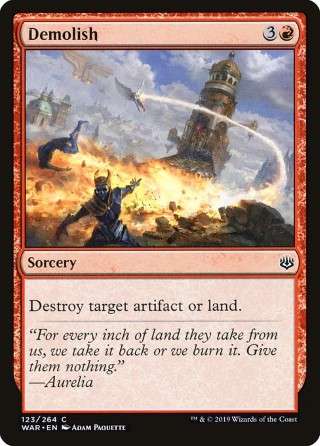
|
$0.15€0.020.05 | ||
| $0.20€0.030.03 | |||
| $0.20€0.040.03 | |||
| $0.24€0.060.03 | |||
| Creature (15) | |||
| $0.25€0.170.03 | |||
| $3.88€4.030.14 | |||
| $0.50€0.360.02 | |||
| $1.72€1.750.02 | |||
| $0.44€0.522.50 | |||
| Planeswalker (2) | |||
| $3.42€2.070.02 | |||
| $1.17€1.330.12 | |||
| Land (26) | |||
| $0.25€0.120.03 | |||
| $0.21€0.150.03 | |||
| $11.99€9.890.88 | |||
| $0.28€0.230.03 | |||
| $0.25€0.070.03 | |||
| $1.50€1.820.03 | |||
|
1
Mountain

|
$0.95€0.060.03 | ||
|
8
Forest

|
$0.20€0.040.03 | ||
Side 15 cards (15 distinct)
| $3.88€4.030.14 | |||
| $0.50€0.360.02 | |||
| $2.91€1.540.02 | |||
| $0.49€0.280.02 | |||
| $1.00€1.661.04 | |||
| $0.24€0.080.03 | |||
| $3.80€4.320.03 | |||
| $0.25€0.080.03 | |||
| $0.30€0.140.02 | |||
| $1.10€0.770.02 | |||
| $0.50€0.240.02 | |||
| $0.29€0.170.02 | |||
| $0.59€0.540.02 | |||
| $0.65€0.390.02 | |||
| $0.25€0.090.03 |
Immediately, some similarities should come to mind.
- There were other land destruction effects that could have been included, such as Tectonic Rift
 , but since it lacks utility in certain matchups, it was left behind in favor or those with other uses.
, but since it lacks utility in certain matchups, it was left behind in favor or those with other uses. - Incubation Druid
 serves both as a ramp creature to give us turn-three LD and a late-game win-con, or at least a disincentive to attack should you find yourself in a bad position.
serves both as a ramp creature to give us turn-three LD and a late-game win-con, or at least a disincentive to attack should you find yourself in a bad position. - Ravager Wurm
 is a win-con that also serves as land destruction and late-game interaction, should the need arise.
is a win-con that also serves as land destruction and late-game interaction, should the need arise. - Running something like Chandra, Awakened Inferno
 or Carnage Tyrant
or Carnage Tyrant would give a way to deal with counterspells.
would give a way to deal with counterspells.
Moreover, the current list actually has advantages that the previous one did not. For instance, instead of eight ramp creatures, it has twelve. That eight of them are one-drops is actually not as relevant as you may hope, since they don’t allow us to play our land destruction effects before turn three anyway. Additionally, Ravager Wurm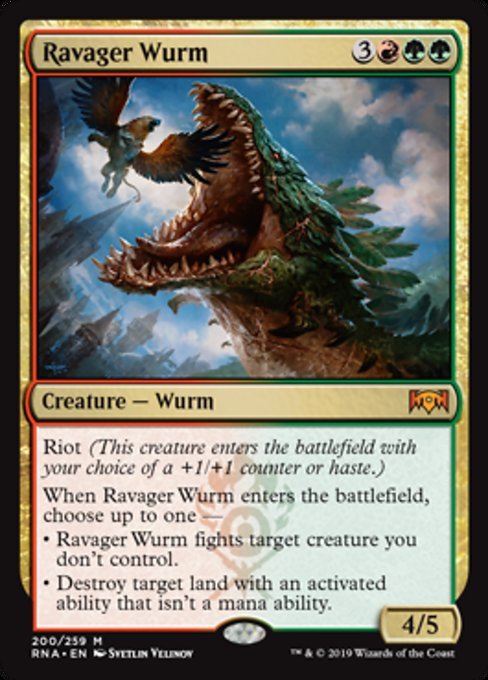 can be an especially good payoff if it resolves, as dealing with an artifact or enchantment is rarely as good as dealing with a creature, especially as Standard continues its march towards a more combat-centric meta (War of the Spark notwithstanding.) That said, its particular flavor of Stone Rain
can be an especially good payoff if it resolves, as dealing with an artifact or enchantment is rarely as good as dealing with a creature, especially as Standard continues its march towards a more combat-centric meta (War of the Spark notwithstanding.) That said, its particular flavor of Stone Rain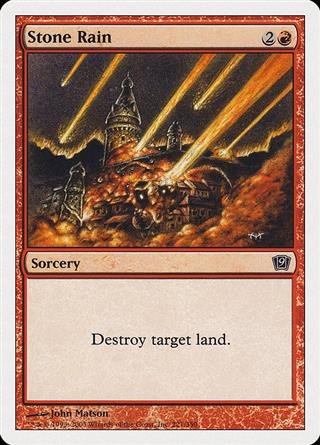 might prove less relevant in a world without the Ixalan transform lands.
might prove less relevant in a world without the Ixalan transform lands.
Of special note to me is the Crucible of Worlds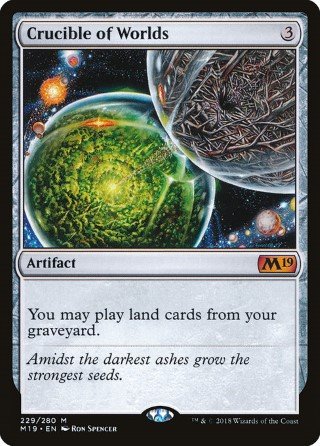 . With two lands that destroy lands in Standard now, one of which simply destroys any land, the ability to create a Strip Mine
. With two lands that destroy lands in Standard now, one of which simply destroys any land, the ability to create a Strip Mine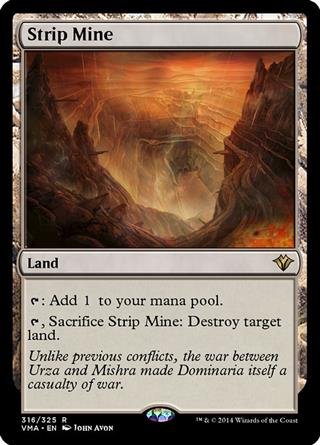 lock in Standard is absolutely irresistible. Of course, this is not necessarily broken, as Memorial to War
lock in Standard is absolutely irresistible. Of course, this is not necessarily broken, as Memorial to War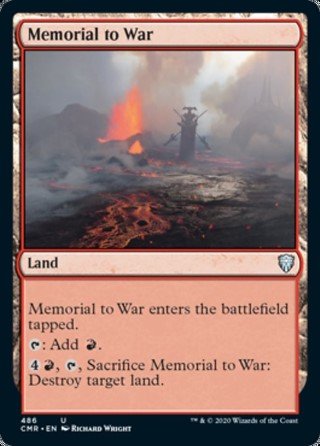 requires itself and five mana to activate and comes in tapped, so it’s reserved for the latest of late games. That said, Field of Ruin
requires itself and five mana to activate and comes in tapped, so it’s reserved for the latest of late games. That said, Field of Ruin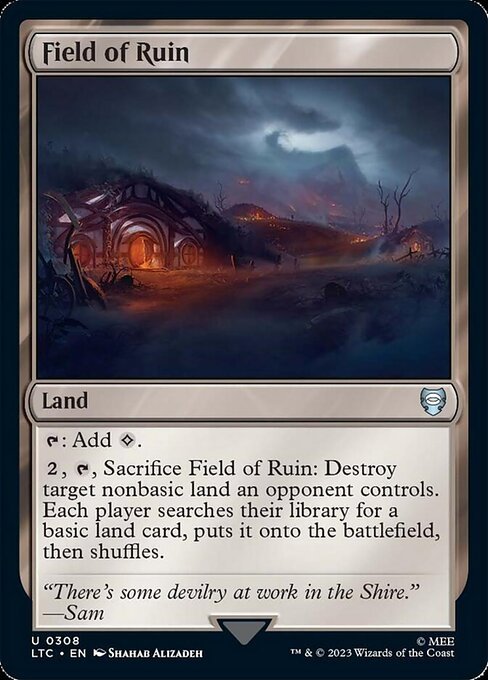 is particularly effective against three-color decks, as they will run out of basic lands before you will, and Evolving Wilds
is particularly effective against three-color decks, as they will run out of basic lands before you will, and Evolving Wilds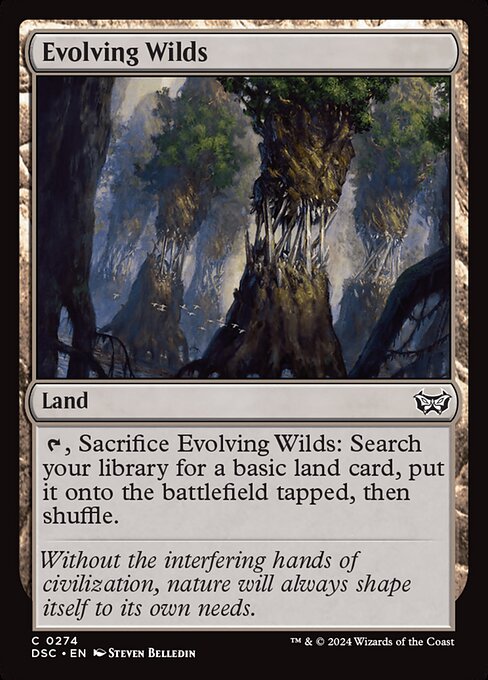 and Cryptic Caves
and Cryptic Caves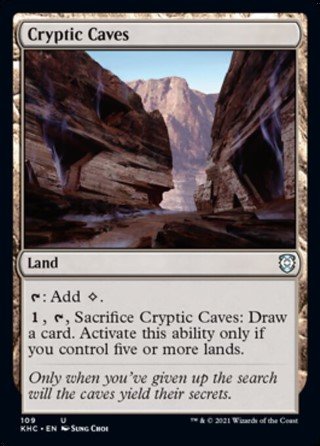 are both meant, in part, to become significantly more effective when recurred. While it likely should be a more-than-one-of, its redundancy combines with its largely late-game utility to discourage me from including more.
are both meant, in part, to become significantly more effective when recurred. While it likely should be a more-than-one-of, its redundancy combines with its largely late-game utility to discourage me from including more.
Now, with what we’ve established, can there be a viable land destruction deck upon rotation? Without knowing what else might be coming out in Throne of Eldraine, here’s an idea for how the deck might be built. (Note that, this time, the deck is built without a wishboard, since you can just imply a list of the fifteen best green/red/colorless creatures. You also might find some trouble with the GGG in her cost, even with one of the last two Mountains becoming a Forest, but that would leave nine red sources until they print more Gruul lands that can come in untapped.)
Gruul Land Destruction - GRN-M20
Main 60 cards (15 distinct)
| Instant, Sorcery, Enchantment, Artifact (18) | |||
|---|---|---|---|
| $0.20€0.040.03 | |||
| $0.20€0.030.03 | |||
|
4
Demolish

|
$0.15€0.020.05 | ||
| $0.25€0.130.03 | |||
| $0.19€0.050.03 | |||
| Planeswalker (4) | |||
| $3.42€2.070.02 | |||
| $0.50€0.250.02 | |||
| Creature (12) | |||
| $1.72€1.750.02 | |||
| $0.50€0.360.02 | |||
| $0.25€0.170.03 | |||
| Land (26) | |||
| $0.25€0.120.03 | |||
| $0.21€0.150.03 | |||
| $11.99€9.890.88 | |||
|
2
Mountain

|
$0.95€0.060.03 | ||
|
12
Forest

|
$0.20€0.040.03 | ||
Side 15 cards (6 distinct)
| $0.25€0.040.03 | |||
| $0.21€0.170.03 | |||
| $0.24€0.090.03 | |||
| $2.43€2.160.20 | |||
| $0.48€0.230.02 | |||
| $8.36€8.541.17 |
If we apply the same test as above, then let’s see how the cards in the deck stack up.
- Land Destruction: 4x Demolish
 ; 4x Ravager Wurm
; 4x Ravager Wurm ; 4x Rubble Reading
; 4x Rubble Reading ; 4x Tectonic Rift
; 4x Tectonic Rift
- Ramp: 4x Arboreal Grazer
 ; 4x Incubation Druid
; 4x Incubation Druid
- Card draw / selection: 1 Chandra, Fire Artisan
 ; 4x Cryptic Caves
; 4x Cryptic Caves ; 2x Jaya’s Greeting
; 2x Jaya’s Greeting - Early to Mid-Game Interaction: 2x Jaya’s Greeting; 4x Lava Coil

- Win-Cons: 1x Chandra, Fire Artisan
 ; 4x Incubation Druid
; 4x Incubation Druid ; 3x Nissa, Who Shakes the World
; 3x Nissa, Who Shakes the World ; 4x Ravager Wurm
; 4x Ravager Wurm
While yes, the card pool for this hypothetical deck is half the size of the BFZ-HOU decklist above, that there are so few cards filling each slot is nevertheless concerning. Under normal circumstances, rotation tends to lead to a slower Standard environment while the meta is establishing itself and while the pool of cheap threats is being filled, but that’s not the case now. Mono Red Aggro / Cavalcade, Boros Feather, and Elementals will all immediately be viable, as they will each have enough upon rotation to continue to exist, and each is low-to-the-ground enough that they can play their real threats before we can begin destroying their lands. In the case of Elementals, with Leafkin Druid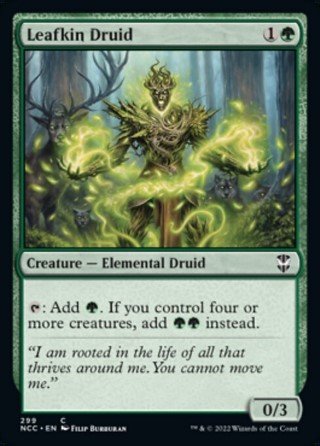 providing ramp and Risen Reef
providing ramp and Risen Reef making the game virtually unwinnable should it be allowed to stick, the destroying each has to be a top priority.
making the game virtually unwinnable should it be allowed to stick, the destroying each has to be a top priority.
That said, the solution may very well be more interaction. Should two more slots be found, an additional Jaya’s Greeting or two would be easy inclusions. On that note, I think that I should address the inclusion of Jaya’s Greeting over Chandra’s Triumph. While the latter can deal with planeswalkers, a potential weakness of the deck, being able to scry away cards that aren’t needed at that time is valuable, especially early in the game. That said, feel free to disagree with me and play Chandra’s Triumph instead.
Before I close, I should address some color variants. While I elected to feature Gruul Land Destruction, since green grants ramp for starting on turn three, there are other colors that can be played in addition to green. Most importantly, in my estimation, is blue, as it gives access to the usual card draw / selection and God-Eternal Kefnet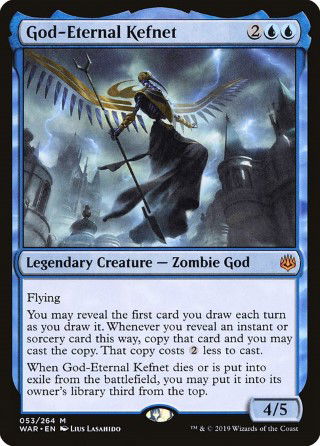 , who can be absolutely bonkers! With six mana, if a Rubble Reading
, who can be absolutely bonkers! With six mana, if a Rubble Reading shows up off of the top, then the copy can be cast for two mana, then the follow-up spell can be cast as well, with each giving scry two to try to find another and really take over the game. Tamiyo, Collector of Tales
shows up off of the top, then the copy can be cast for two mana, then the follow-up spell can be cast as well, with each giving scry two to try to find another and really take over the game. Tamiyo, Collector of Tales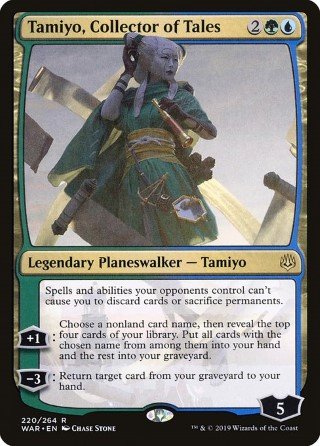 can also recur your spells, find new ones, and protect you from hand attack or sacrifice effects.
can also recur your spells, find new ones, and protect you from hand attack or sacrifice effects.
With all of that said, thank you for reading. I hope that you enjoyed it, and I do hope that the archetype can be viable, especially since I’ve decided to make it my main deck as the new Standard opens, despite all of the shortcomings that I listed it as having. If you have any suggestions, other cards that you might have included, then please offer them in the comments below. Please look forward to seeing more from me on here or on my YouTube channel.
About T1GlistenerElf:
I'm Jay "T1GlistenerElf" Stephens, an MtG YouTuber, infect aficionado, deck brewer, and all around memer.

